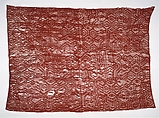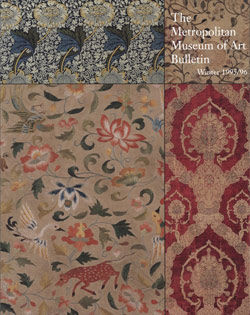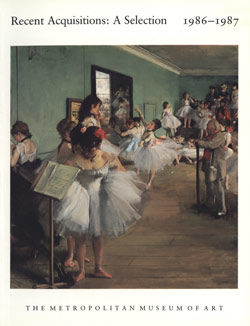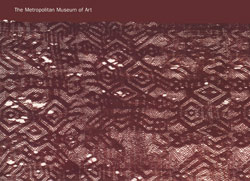Mantle
Not on view
Images of twelve "oculate beings" are worked into this mantle by a technique called sprang, which replicates the pattern in mirror image on either side of the vertical center. The oculate beings are composed of stylized frontal heads with concentrically ringed eyes (from which they get their name) and semierect spotted bodies. They stand in two horizontal registers, alternately right side up and upside down across the width of the mantle. Their heads, too, can be read two ways, indicating yet again the visual complexity of which the ancient Peruvians were capable. The mantle is an early example of a textile type thought to be a man's cloaklike garment that was long in use in Precolumbian Peru. Fully articulated by the late centuries B.C.E., mantles continued to be made until long after the Spanish conquest of the sixteenth century. A number of complete early mantles are known from Ocucaje in the southern Ica Valley, the source of this example. It is one of the largest Peruvian textiles made in sprang, a technique in which there is no weft and the pattern is produced by hand manipulation of the warp. Openwork Ocucaje mantles had a funerary function.
Due to rights restrictions, this image cannot be enlarged, viewed at full screen, or downloaded.



![Cochineal Red: The Art History of a Color [adapted from The Metropolitan Museum of Art Bulletin, v. 67, no. 3 (Winter, 2010)]](/-/media/images/art/metpublication/cover/2010/cochineal_red_the_art_history_of_a_color.jpg)

